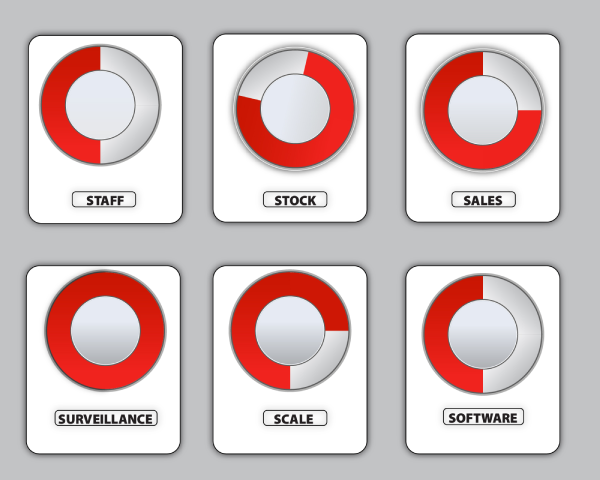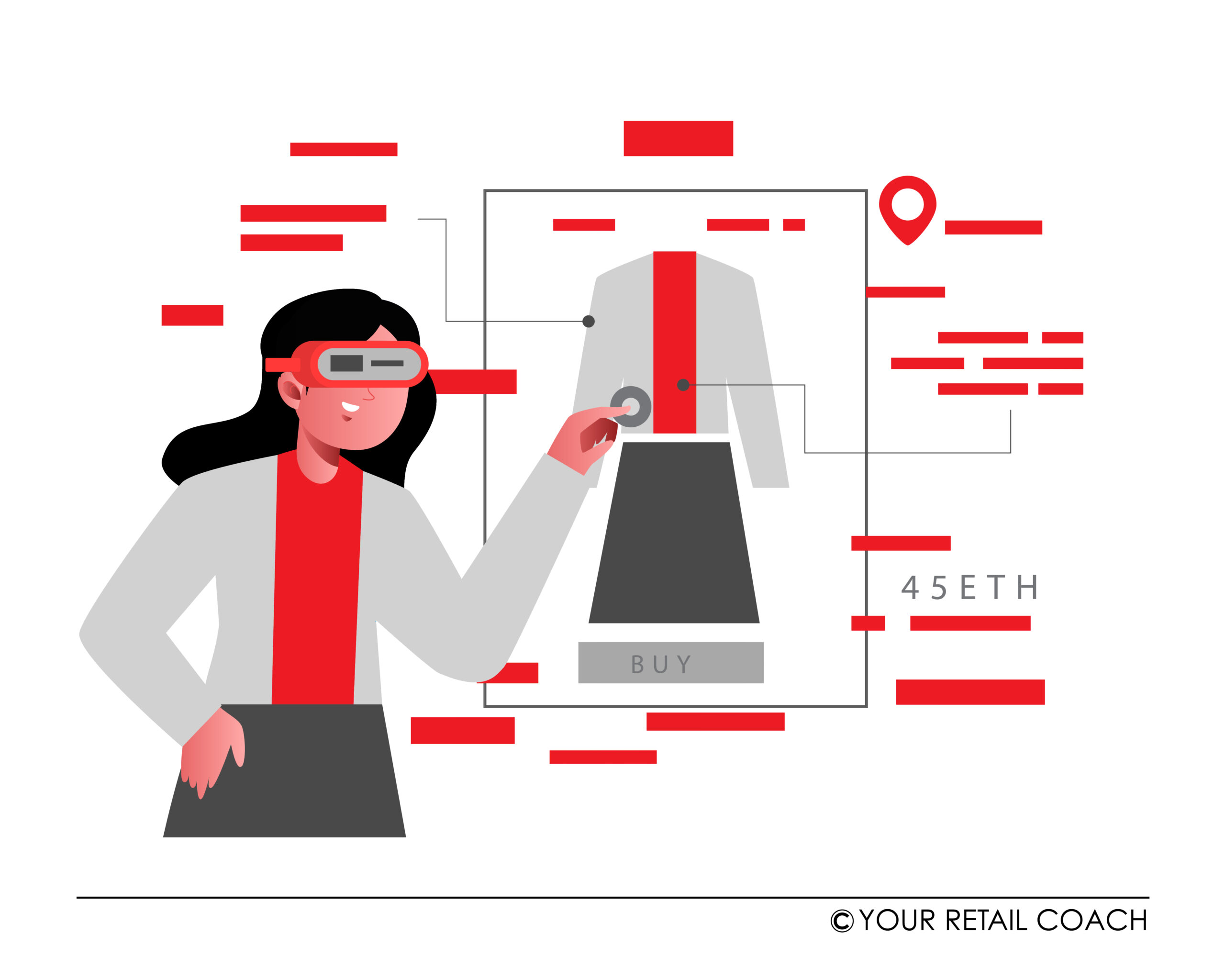What is Metaverse?
What if we tell you that you could shop from a retail store not through its website or app but by virtually visiting the store with a VR headset on? Or imagine being able to order merchandise while playing a game within the game. Such innovations could mean a lot of shocks and surprises for retailing and retailers. If the concept takes off as much as the buzz it has been creating off late, it could well bifurcate even eCommerce into an old and new version.
Metaverse is nothing but any digital/technological platform that is capable of delivering a more realistic or virtual experience to users with or without the potential for giving effect to real-life situations. There may have been no necessity for this term at all; probably the reason why even the experts leave defining it open for interpretation. The concept of metaverse is the coming together of technologies for creating and delivering a verisimilitude experience to the audiences and customers. For instance, the PlayStation or Xbox controller that shakes when particular in-game situations happen is also an example of metaverse. The internet is also an early version of what we are now calling metaverse. You could shop as if you are in a marketplace. The same applies to phones as well. You can speak to someone as if they are in front of you. It is like technology and experience reaching another level of relationship.
In this blog, we shall explore ideas and options on how different retail brick & mortar businesses can embrace metaverse in varying degrees and possibly, also start a metaverse store in the near future.
Departmental Stores and Supermarkets
Departmental stores and supermarket brands that have not yet gone omnichannel are already facing stiff competition from their omnichannel counterparts and dark stores. Adopting metaverse will necessitate them to take up digital transformation. But metaverse is more about the experience factor. These businesses will have to work on that. One initiative towards embracing metaverse could be having online cameras for live-viewing of merchandised inventory in stores. The idea is to compensate for the fact that a customer is actually not in the store. This must be followed by giving customers the option of adding items to their carts by tapping on their phone screen.
Fashion Retail
A strong reason for many customers not buying fashion products online, especially apparel and footwear products is the lack of validation. In online shopping, customers are deprived of the experience of checking out how a particular dress or footwear would look on them. This is where physical retailers have an upper hand. By going digital and adding the element of VR (Virtual Reality) and AR (Augmented Reality), retailers could further leverage this competitive edge against both online and offline retailers. Using virtual 3D avatars, customers could see how a dress or footwear would look on them. They could try hundreds of products and select the best ones for themselves. Businesses would get sales even during closed hours with home delivery or pickup features. Many renowned brands have already started making advancements in this area. Along with lending a novel and fun experience of shopping in the metaverse, it could be a huge competitive advantage for the early starters.
Beauty and Personal Care
Retailers usually do not face any problems with renowned and popular brands of beauty and personal care products. The problem emerges in encouraging customers to try new brands and products. This problem can be contained to a significant extent by displaying pre-recorded videos of product application videos (preferably short videos) on display screens in stores. The services of relevant social media influencers and local makeup artists could be availed to make these videos. Wait, does that count as metaverse? Metaverse need not always mean ARs and VRs. The essence is the experience that can be realistic and/or virtual. The same approach could be applied digitally for omnichannel shopping, or what we may now rightfully call metaverse shopping.
Health & Wellness
Access to high-quality healthcare and wellness products and services has always been a hurdle for people living in semi-urban and remote areas. Ecommerce and remote consulting have solved this problem to some extent. The metaverse approach could help organisations in this sector deliver a much better experience while the matter of accessibility will depend on the prevalent IT and internet infrastructure. For instance, doctors could have a look at their patients via VR technology in relevant cases for prima facie examinations. One may argue that such facilities already exist. Yes, they do. That is why we said earlier that the term metaverse better serves novelty in nomenclature. The difference is in the quality of the experience traded.
Automobile and Auto Accessories
Automakers like Mercedes, Toyota, Kia and many others already have virtual showrooms. Without physically visiting these showrooms, customers can peek into the exteriors and interiors of the cars. They can swap between day and night modes and check the lights. They can switch to any seat of the car for viewing perspective. Even the doors can be opened and closed. Maybe someday we will also get to drive the realistic, virtual versions of these cars on our smartphones or laptops in a virtual environment as we can do in video games. These places are not intended to create conversions but for customers to explore and learn, and possibly also generate some interest. Customers are unlikely to buy cars over virtual visits. But many driver training schools have applied the concept of metaverse (whether they call it by that name or not) more profoundly by imparting driving lessons using simulators in their institutes.
Hotels and Restaurants
Like automakers, many hotel brands already have the feature of virtual tours. But more than tours, these are pre-recorded compilations of photos and videos. Metaverse is more than that. We may very soon see the features of the ability to move, speak to hotel staff (customer support), check the rooms, avail booking services, and do more within these virtual tours.
Metaverse could be a brilliant opportunity for restaurants and cloud kitchens. They could show the standards of quality maintained in their kitchens, see the food items after preparation, speak to the managers directly, place orders, or raise complaints and all within a virtual environment.
Home Décor
Companies like Ikea have been using AR technology for a long time to help customers choose their products. Going beyond virtual tours, Ikea has an application through which customers can check how a product would look in their home. This lends a far more realistic experience than having to completely rely on imagination before making a purchase. It may not sound extraordinary today but it was a superlative form of innovation when it first came. It still has profound relevance for businesses even today. The same approach has been adopted by many paint companies. It makes it so easier for customers to visualise and pick the colour of their choice. Would such an application of AR technology benefit your business?
Consumer Electronics and Home Appliances
As a customer, imagine being able to prepare a food item, say using a microwave, virtually over a digital platform and get that food delivered to your doorstep. Here, the focus is not on the food but the performance of the cooking appliance. The value chain has to be sorted and if done right, the experience would be no short of being an extraordinary one. Or say you want to buy a refrigerator and you want to see its electricity consumption. That too could be virtually exhibited to you.
How you approach metaverse retail and what kind of innovation you bring in to deliver an uber experience to your customers is all up to you. We only shared a few ideas and options for your further evaluation. Metaverse could comprise existing or emerging technologies encompassing AR, VR, Artificial Intelligence, blockchain, IoT (Internet of Things), virtual currencies, 3D reconstruction, Web 3.0, and others in the pipeline. The idea is to use these technologies to enhance customer experience in the shopping journey coinciding with business goals and objectives.
About YRC: We are retail and eCommerce business consultants on the path of discovering unmatched ways of doing business.
Retail Healthometer
Check the health of your business? Are you ready to organize & scale ?

Get In Touch











